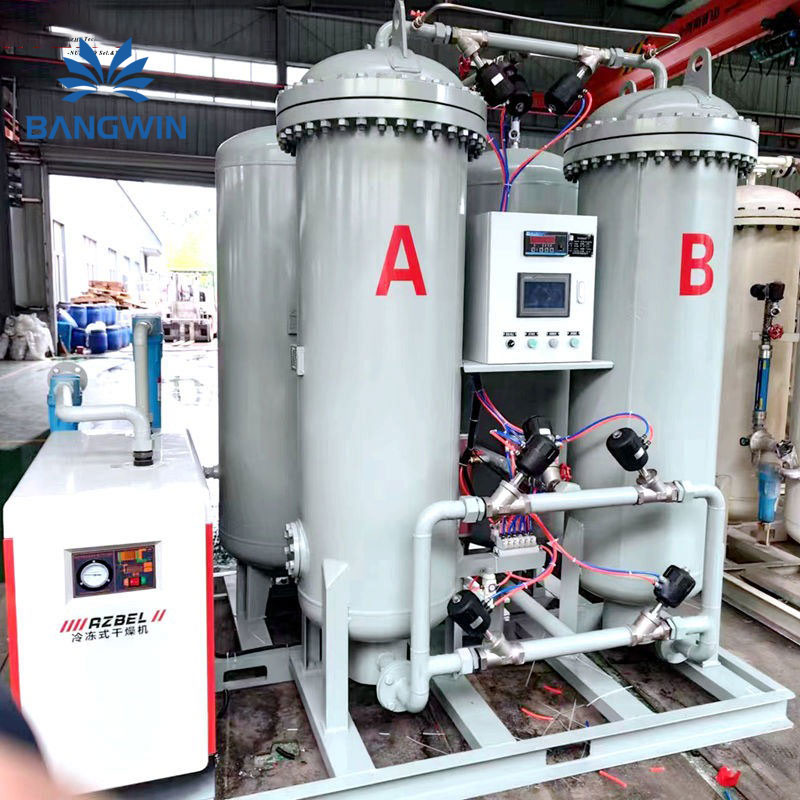Reducing the working pressure of the air separation equipment can reduce the unit energy consumption of the product. The working pressure of the full low-pressure air separation equipment is close to the working pressure of the lower tower, while the working pressure of the small air separation equipment is much higher than the pressure of the lower tower. The working pressure is low, and the unit cooling capacity generated by expansion is also small. In order to maintain the balance of cooling capacity, it is first required that the unit cooling loss is also small. For large-scale air separation equipment, the unit cooling loss decreases as the unit capacity increases. At the same time, a smaller hot end temperature difference is also selected during design. The unit cooling loss due to incomplete heat exchange is relatively small, which is a good way to reduce the working pressure. Favorable conditions were created.
In addition, the low working pressure requires the expander to have high efficiency so that it can produce a larger cooling capacity under the same pressure difference. As the capacity of the turboexpander increases, the optimal rotation speed decreases and the efficiency increases. Therefore, it is most suitable for large-scale air separation equipment, making it possible to reduce working pressure.
For small air separation equipment, the cooling loss is relatively large. Even if a turbine expander is used, the speed is as high as 105r/min or more, the efficiency is low, and the maintenance and management requirements are very high. In addition, for large-scale air separation equipment, the amount of expansion is small relative to the amount of process air. The expanded and refrigerated air can still participate in distillation and extract oxygen from it. If a small air separation equipment adopts a low-pressure process, because the amount of expansion gas required to generate refrigeration capacity is large and cannot be fully involved in the distillation, the oxygen extraction rate will be very low, and the energy consumption per unit product will still be high. Therefore, the full low-pressure process is most suitable for large and medium-sized air separation plants.
At present, with the adoption of molecular sieve adsorption purification and booster turbine processes, as well as the advancement of plate-fin heat exchanger technology, the minimum capacity of low-pressure air separation equipment has been designed to 340m3/h oxygen production and 800m3/h nitrogen production (KDON -340/800), the exhaust pressure of the air compressor is 0.59MPa.



